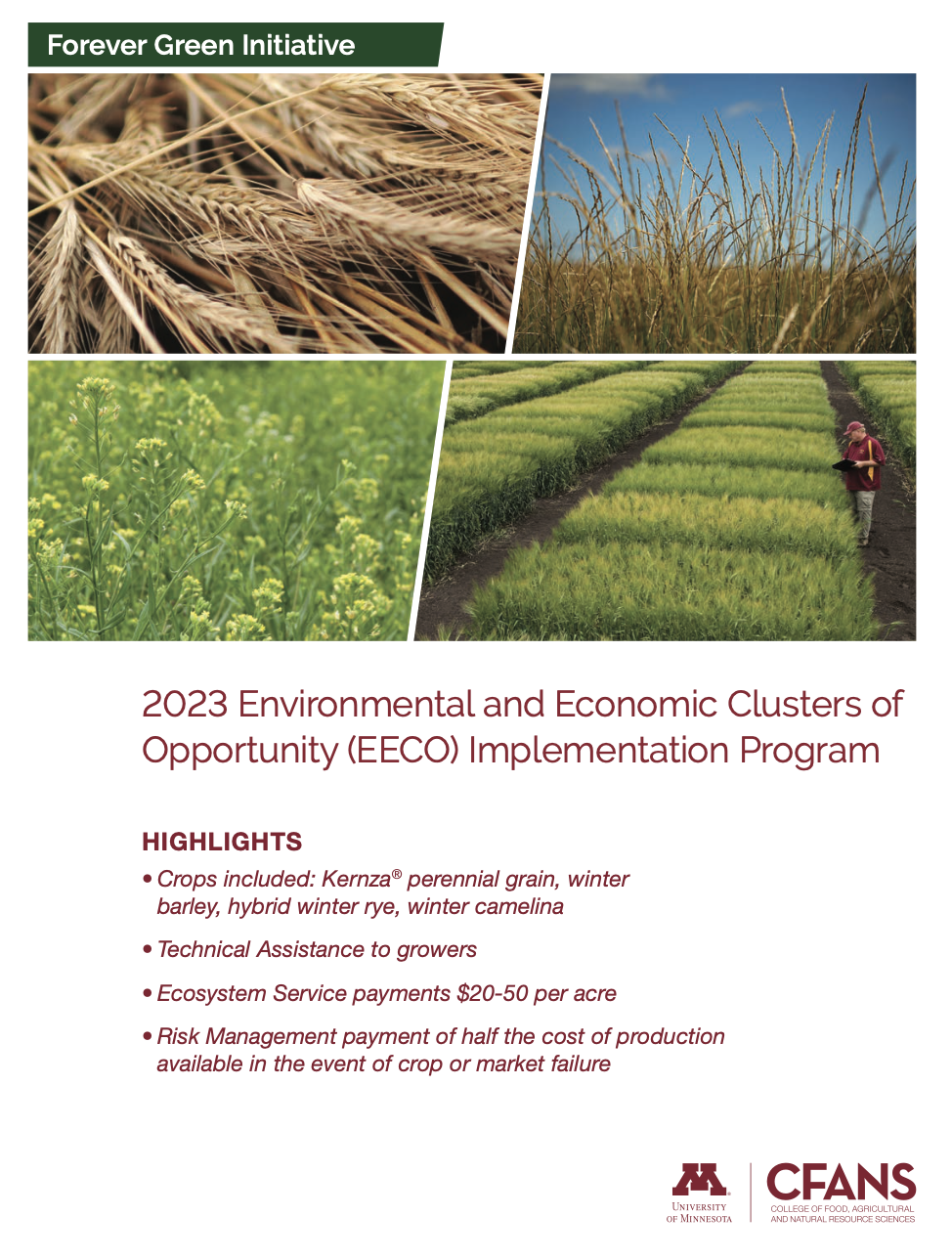
Eligible Minnesota growers can now receive financial and technical assistance when they add one of the following crops to their rotations: Kernza® perennial grain, winter camelina, winter barley or hybrid winter rye. All of these crops grow over the winter, providing the soil health and water quality benefits of cover crops while also producing grain and/or forage that can be harvested and sold.
Growers who take part in the Forever Green EECO Implementation Program are eligible for conservation (or “ecosystem service”) payments ranging from $20-50 per acre, as well as a risk management payment that will cover up to half the cost of production in the event of crop or market failure. In addition, enrolled growers are eligible for technical assistance from a dedicated field agronomist and knowledgeable community partners.
The Forever Green EECO Implementation Program recently expanded to include these four crops, after initially focusing on Kernza. To date, 16 growers have enrolled 683 acres of cropland in the pilot program. The EECO program is a partnership between the University of Minnesota Forever Green Initiative and the Minnesota Department of Agriculture, with funding from the State of Minnesota’s Clean Water Fund.
Protecting water quality is a major goal of this program. Growers who are located in Drinking Water Supply Management Areas are eligible for a 25% premium on their ecosystem service payment.
The program is focused on four regions of the state, which have been dubbed Economic and Environmental Clusters of Opportunity, or EECOs. The counties included in these regions are listed below. In addition, all Tribal Nations in the state are included.
Eligible locations
The pilot program targets four areas of Minnesota, plus all Tribal Nations, for expanded production of these “continuous living cover” crops.
Southeast EECO: Dakota, Goodhue, Wabasha, Winona, Houston, Fillmore, Olmsted, Mower, Freeborn, Waseca, Steele, Dodge, Rice, Le Sueur, or Nicollet Counties
Western EECO: Nobles, Murray, Lyon, Rock, Pipestone, Lincoln, Yellow Medicine, Lac qui Parle, Chippewa, Big Stone, Swift, Pope, Stevens, Traverse, Grant, Douglas, Otter Tail, Becker, Clay, Mahnomen, Norman, Polk, Red Lake, Pennington, Marshall or Kittson Counties
Central EECO: Stearns, Todd, Wadena, Hubbard, Cass, Crow Wing, Morrison, Benton, Sherburne, Mille Lacs, Wright or Isanti Counties
Northwest EECO: Roseau or Lake of the Woods Counties
All Tribal Nations and Communities with enrolled acres within the boundaries of the State of Minnesota: Bois Forte Band of Chippewa, Fond du Lac Band of Lake Superior Chippewa, Grand Portage Band of Lake Superior Chippewa, Leech Lake Band of Ojibwe, Lower Sioux Indian Community, Mille Lacs Band of Ojibwe, Prairie Island Indian Community, Red Lake Nation, Shakopee Mdewakanton Sioux Community, Upper Sioux Community, White Earth Nation
Learn more and enroll in the Forever Green EECO Implementation Program here.
Contact: Sienna Nesser — [email protected]